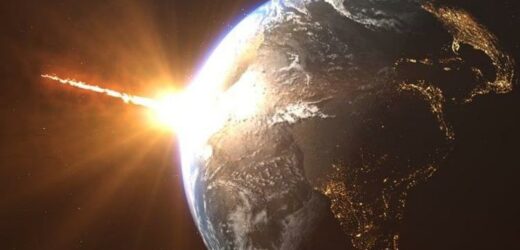The history of the UK space sector
We use your sign-up to provide content in ways you’ve consented to and to improve our understanding of you. This may include adverts from us and 3rd parties based on our understanding. You can unsubscribe at any time. More info
The agency’s officials were testifying at a House Science, Space, and Technology subcommittee hearing on Wednesday – and called for new weapons to help the US reach Mars before powers such as Russia and China. NASA called on US lawmakers to invest more resources into researching and developing nuclear-powered rockets. They said this would which help humans reach the planet in just three to four months.
This is half the time it would take the usual chemical propelled rockets.
Bhavya Lal, NASA’s senior adviser for Budget and Finance, told the subcommittee meeting: “Our strategic competitors, including China, are indeed aggressively investing in a wide range of space technologies, including nuclear power and propulsion to fulfil their ambitions for sustained human lunar presence, as well as Martian and deep space science missions.
“The United States needs to move at a fast pace to stay competitive and to remain a leader in the global space community.”
This also comes after China allegedly tested a hypersonic nuclear-capable missile which caught US officials off guard.
The missile allegedly circled the globe in low-Earth orbit before heading towards its intended target


The nuclear-capable rocket is said to have carried a hypersonic glide vehicle that allowed it to travel at a rapid pace.
NASA are now scrambling for the US to boost their space defences as China appears to advancing its space technology at a rapid pace.
Taylor Fravel, an expert on Chinese nuclear weapon policy, told the Financial Times earlier this month that China’s advancement on hypersonic weapons presents a unique threat to US defence.

He said: “Hypersonic glide vehicles . . . fly at lower trajectories and can manoeuvre in flight, which makes them hard to track and destroy.”
This means the US system to destroy enemy missiles might not be prepared for incoming attack.
But while the NASA are hoping to ramp up their space defence systems as they prepare to fend off China in the space race, the move would also come at high risk.
A spokesperson for Campaign for Nuclear Disarmament told Express.co.uk: “The idea of using nuclear-power in space is not new and has long been suggested as a way of getting to Mars quickly.
DON’T MISS Mass grave uncovered that remained Nazi secret since Holocaust [REVEAL] World’s first pig to human kidney transplant ‘worked immediately’ [REPORT] Poland send EU furious letter as Russia “manipulates’ gas market [INSIGHT]


“But the launch into space of a nuclear reactor also risks a catastrophic spread of radioactive material if, for example, the launch vehicle were to malfunction and explode – which would be quite possible if an over competitive rush to space were to occur.
“Nuclear power has also been suggested for other applications, such as powering space weapons and military bases on the Moon and Mars. So, there really needs to be international consideration of the possible applications of nuclear power in space and their desirability. Some of the risks may well outweigh any possible advantages.”
Source: Read Full Article


